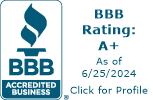PhD in the Mind of a Five-Year-Old
Once, when I attended a conference, the speaker told the story of his young grandson visiting for the summer. The grandfather grew oleander, an extract of which is used in beauty products. That particular day, a group of scientists were scheduled to visit. The grandson wanted to know more, and the grandfather told him a bunch of Ph. D.s were visiting. Not knowing what a PhD was, he asked what that meant.
“Oh,” said the grandfather, “they’re post-hole diggers.”
Later that day, the scientists arrived, and as they walked through the fields of oleander, the young boy looked up at them and asked, “When are you going to dig the holes?”
Taken aback, they asked what he meant.
“Well,” said the five-year-old, “Grandpa says you are post-hole diggers.”
The grandfather had some explaining to do to wriggle his way out of that!
The Importance of Posts
You can’t have a fence without posts, and you can’t have posts without holes. Posts come in many sizes, shapes, and materials. Check out our steel T-posts. We also supply pine and cedar posts.
Call Terry and ask her about which posts are best for your project. 978-486-3116
All my best regards,
Debbie Page
CEO, Louis E. Page Inc – Woman-owned business and Family-owned since 1893. (So 131 years ago our family ancestor Louis E. founded the company.)
P.S. Let’s make sure your fencing project has the right foundation!










